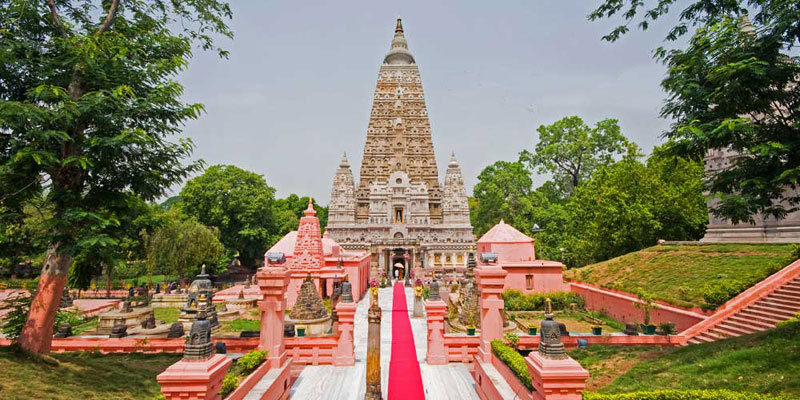Bodh Gaya Mahabodhi Temple – Bihar

Address
Bodh Gaya Mahabodhi Temple – Bodh Gaya, Bihar-824231 India
Deity
Buddha
Introduction
- Location: Bodh Gaya, Gaya District, Bihar, India, approximately 96 km from Patna.
- Significance: The Mahabodhi Temple, a UNESCO World Heritage Site, marks the place where Siddhartha Gautama (Buddha) attained enlightenment under the Bodhi Tree.
- Historical Background: This ancient temple, which has been rebuilt and restored multiple times, dates back to the Mauryan period, with some elements believed to be from Emperor Ashoka’s reign (around 250 BCE). It is one of the earliest brick structures in India and has influenced Indian architecture over the centuries.
- Pilgrimage Destination: It is a significant site for both Hindus and Buddhists, attracting pilgrims for over two thousand years.
Puranic Significance:
- Emperor Ashoka’s Influence: Around 250 BCE, Emperor Ashoka established a monastery and shrine at Bodh Gaya, the holy site where Buddha attained enlightenment. While the monastery and shrine no longer exist, Ashoka’s Diamond Throne (Vajrasana), which marks the spot where Buddha meditated, remains and is a focal point for worship and festivities at the temple.
- Historical Architecture: The temple is a remarkable example of early brick construction from the Gupta period. It also features sculpted stone balustrades, considered early examples of intricate reliefs.
- Six Sacred Sites and Lotus Pond: The temple complex consists of the main temple and six significant places associated with Buddha’s enlightenment journey, along with a seventh sacred location, the Lotus Pond, situated just outside the temple enclosure.
Beliefs:
- The Bodhi Tree: A sacred descendant of the original tree under which Buddha attained enlightenment. Pilgrims gather around this giant tree, which is central to the temple’s spiritual importance.
- Weeks of Enlightenment:
- First Week: Buddha sat under the Bodhi Tree.
- Second Week: He meditated at Animeshlochan Chaitya, to the north of the main temple.
- Third Week: Buddha paced 18 steps back and forth in the Ratnachakrama (Jewelled Ambulatory) near the north wall of the temple.
- Fourth Week: Spent at Ratnaghar Chaitya, northeast of the temple.
- Fifth Week: Under the Ajapala Nigrodh Tree, near the east entrance, where Buddha answered questions posed by Brahmans.
- Sixth Week: By the Lotus Pond, south of the enclosure.
- Seventh Week: Under the Rajyatana Tree, southeast of the temple.
Special Features:
- Vajrasana (Diamond Throne): A polished sandstone platform next to the Bodhi Tree marks the exact spot where Buddha meditated. It was originally established by Emperor Ashoka and is revered by pilgrims.
- Stone Balustrade: Once encircling the Bodhi Tree, it features sculpted faces, animals, and detailed carvings. Only a few original pillars remain.
- Footprints of Buddha (Padas): Black stone carvings near the shrine, dating back to Emperor Ashoka’s reign, symbolizing Buddha’s presence and teachings. Ashoka installed such footprint stones throughout his kingdom after declaring Buddhism the official religion.
Architectural Significance:
- Unique Brick Structure: One of the few surviving early brick constructions in India, the Mahabodhi Temple complex showcases the architectural ingenuity of the Gupta period. Its durability is noteworthy given that it is primarily made of brick and stucco, materials that are less resilient than stone.
- Cultural Legacy: The Mahabodhi Temple complex remains an essential site for studying the life of Buddha and the development of Buddhist architecture and art.
Century/Period/Age
250 and 233 BCE
Managed By
UNESCO world heritage site
Nearest Bus Station
Gaya
Nearest Railway Station
Gaya
Nearest Airport
Gaya




